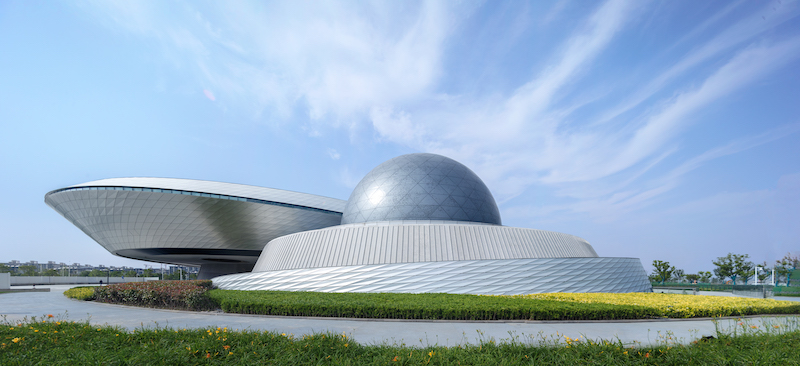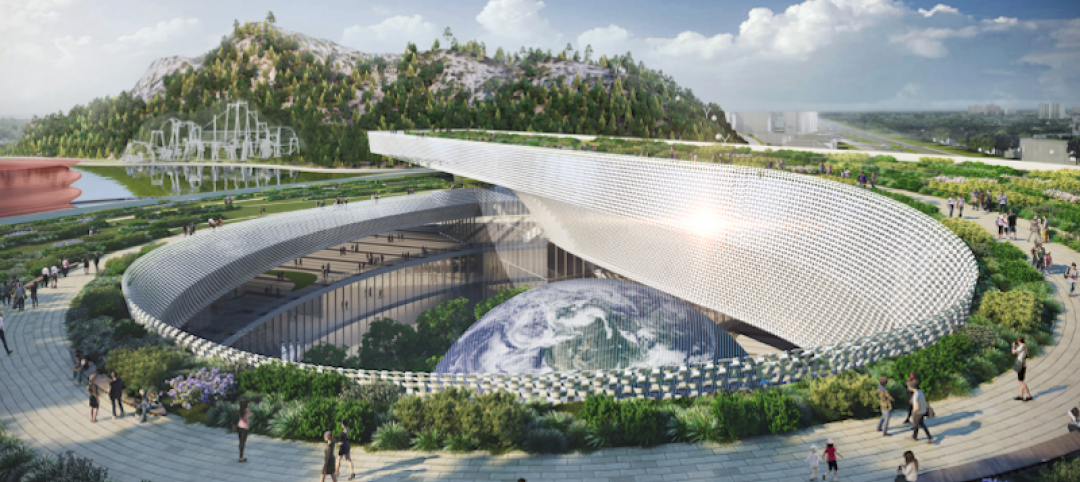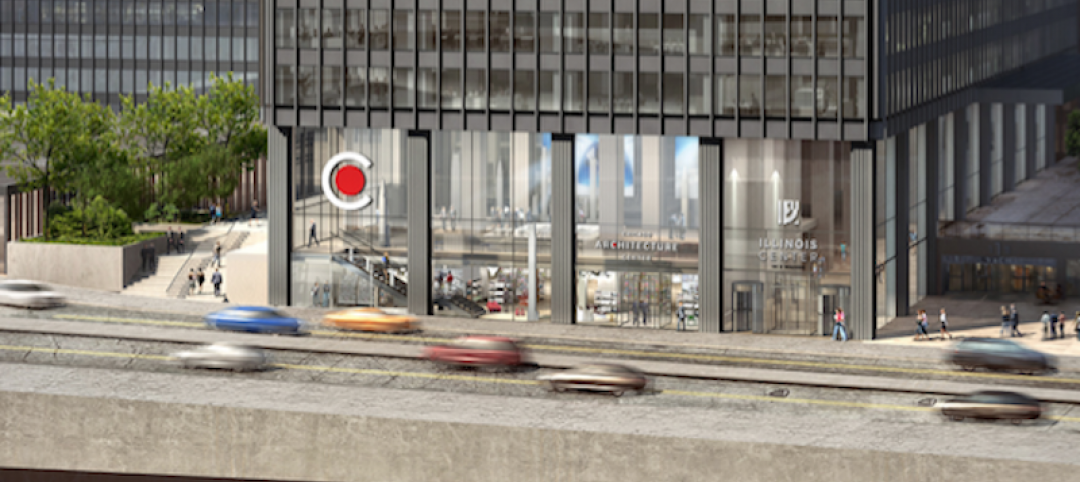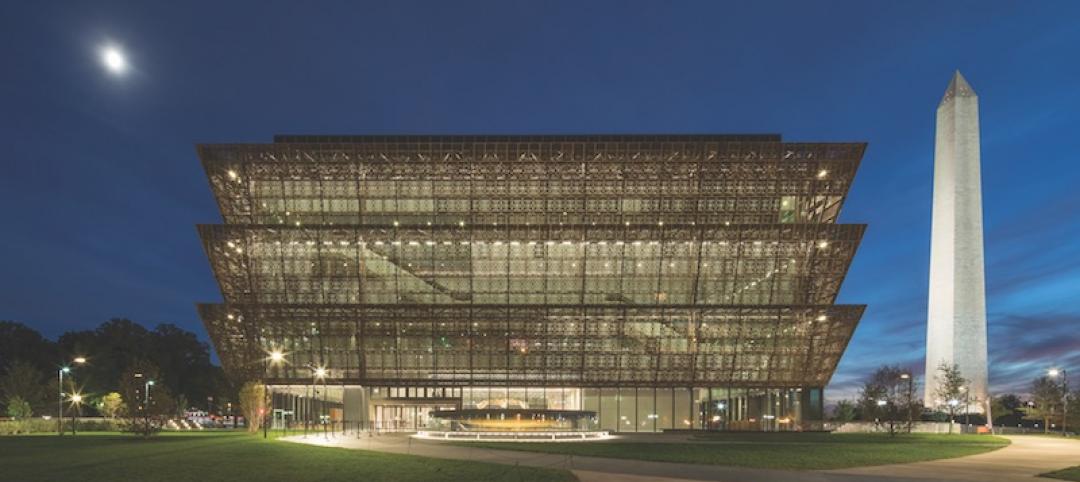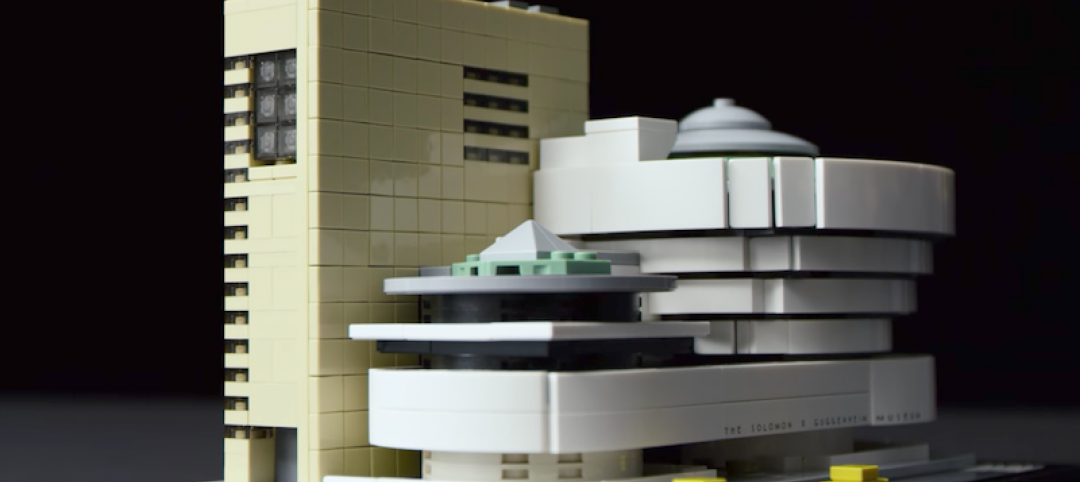The recently completed 420,000-sf Shanghai Astronomy Museum is set to open on July 18. The new astronomical branch of the Shanghai Science and Technology Museum is the largest museum in the world solely dedicated to the study of astronomy.
The building does not include any straight lines or right angles as a nod to the geometry of the universe and the dynamic energy of celestial movement. Design inspiration was drawn from the “three-body problem” in physics, which looks to the intricate choreographies created by gravitational attraction of multiple bodies within solar systems.
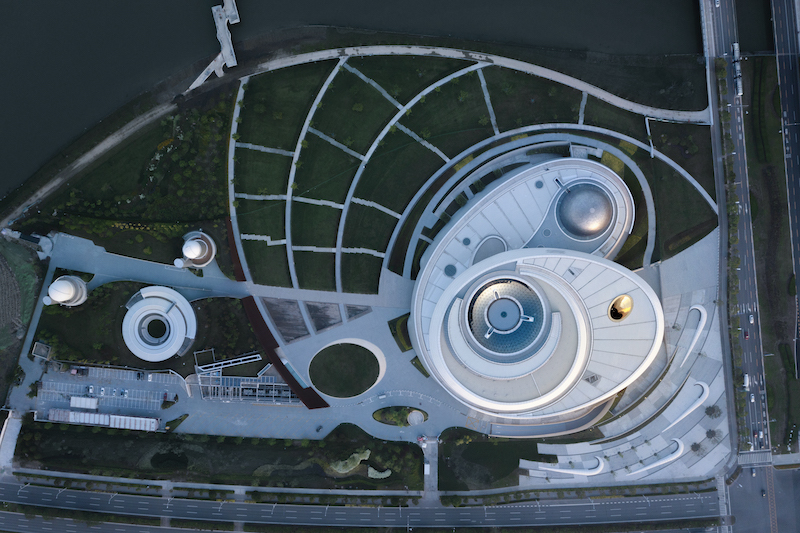
The building’s envelope traces a series of arcing paths that are influenced by gravitational pull: the heart of the central atrium, the forward momentum at the entry, and the planet-like sphere that envelopes the planetarium theater. Additionally, the museum’s three principal architectural components, the Oculus, the Inverted Dome, and the Sphere, act as functioning astronomical instruments that track the sun, moon, and stars.
The Oculus is suspended over the museum’s main entry and demonstrates the passage of time by tracking a circle of sunlight on the ground across the entry plaza and reflecting pool. The Sphere houses the planetarium theater, which is half submerged in the building. The Sphere derives its shape from the programmatic element it contains, but also from an abstract manifestation of a primary celestial form. With minimal visible support, the Sphere evokes an illusion of weightlessness and anti-gravity. The Inverted Dome is a large, inverted glass tension structure that sits on top of the central atrium at the roof line. Visitors will have the ability to occupy the center of the glass dish with an unimpeded view of the sky. The Inverted Dome acts as the culmination of the exhibit journey. A 720-degree spiraling ramp inside the museum and underneath the Inverted Dome traces the orbital flow of the visitor sequence throughout the museum exhibits and draws the eye upward to its apex.
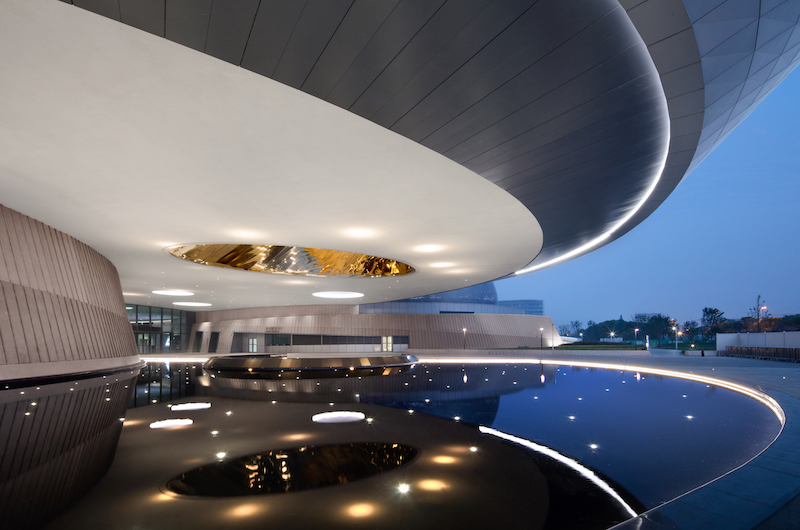
The museum grounds include buildings and programming such as temporary and permanent exhibits, a 78-foot solar telescope, an observatory, an optical Planetarium, an Education and Research Center, and a Digital Sky Theater. Programming at the museum will feature immersive environments, artifacts and instruments of space exploration, and educational exhibits.
A ceremony to celebrate the museum’s opening will be held on July 17.
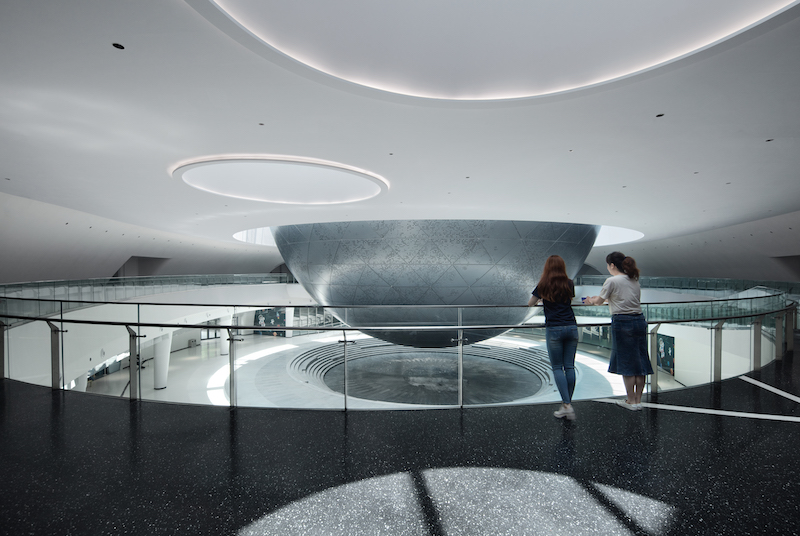
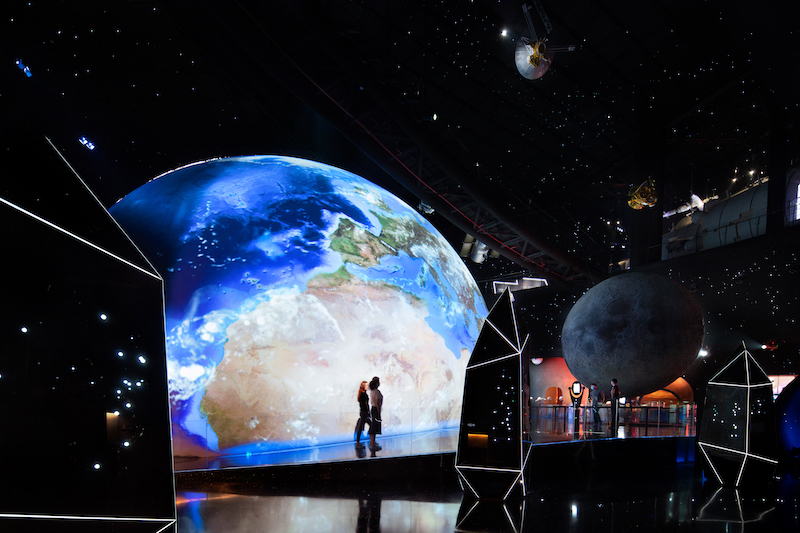
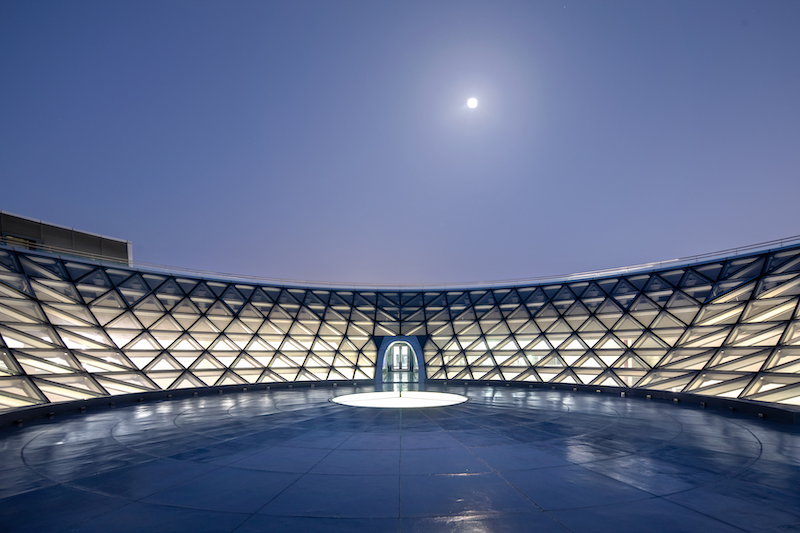
Related Stories
Museums | Jan 11, 2018
Suzhou Science & Technology Museum will highlight new cultural district in Shishan Park
The 600,000-sf museum will be about 62 miles northwest of Shanghai.
Museums | Dec 12, 2017
History museum embodies the culture of the Oregon coast
The barnlike structure comprises 15,000 sf of space.
Museums | Oct 3, 2017
Denmark’s new LEGO experience hub looks like it’s made out of giant LEGO blocks
The 12,000-sm building is part of Billund, Denmark’s goal to become the ‘Capital for Children.’
Museums | Sep 28, 2017
Tunnel-boring machine will be the centerpiece of a planned 150,000-sf Metro Museum in Wuhan, China
GreenbergFarrow beat out five other design firms for the opportunity to design the museum.
Museums | Sep 15, 2017
Former basketball gym becomes Stanford Athletics ‘Home of Champions’
The Home of Champions uses interactive displays to showcase Stanford’s 126-year history of student athletes.
Museums | Sep 8, 2017
CAF announces plans for 20,000-sf Chicago Architecture Center to be built on East Wacker Drive
The Adrian Smith + Gordon Gill-designed space will open in summer 2018.
Museums | Aug 15, 2017
Underground Railroad Visitor Center tells story of oppression, then freedom
The museum is conceived as a series of abstracted forms made up of two main structures, one administrative and one exhibit.
Museums | Jul 5, 2017
Addition by subtraction: Art Share L.A. renovation strips away its acquired superfluity
The redesign of the 28,000-sf building is prioritizing flexibility, openness, and connectivity.
Building Team Awards | Jun 7, 2017
Rising above adversity: National Museum of African American History and Culture
Gold Award: The Smithsonian Institution’s newest museum is a story of historical and construction resolve.
Architects | Jun 7, 2017
Build your very own version of Frank Lloyd Wright’s Guggenheim Museum with this new LEGO set
744 LEGO bricks are used to recreate the famous Wright design, including the 1992 addition.


